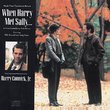| All Artists: Gustav Mahler, Benjamin Zander, Philharmonia Orchestra Title: Mahler: Symphony No. 5 - Benjamin Zander / Philharmonia Orchestra Members Wishing: 0 Total Copies: 0 Label: Telarc Release Date: 4/24/2001 Genres: Special Interest, Classical Style: Symphonies Number of Discs: 2 SwapaCD Credits: 2 UPC: 089408056925 |
Search - Gustav Mahler, Benjamin Zander, Philharmonia Orchestra :: Mahler: Symphony No. 5 - Benjamin Zander / Philharmonia Orchestra
 | Gustav Mahler, Benjamin Zander, Philharmonia Orchestra Mahler: Symphony No. 5 - Benjamin Zander / Philharmonia Orchestra Genres: Special Interest, Classical
Benjamin Zander follows his outstanding live recording of Mahler's 9th with an even more impressive version of the 5th, made in the studio and thus yielding even more lifelike sound and orchestral polish. The opening fun... more » |
Larger Image |
CD DetailsSynopsis
Amazon.com Benjamin Zander follows his outstanding live recording of Mahler's 9th with an even more impressive version of the 5th, made in the studio and thus yielding even more lifelike sound and orchestral polish. The opening funeral march movement is especially notable for the outstanding trumpet soloist, neatly judged tempos, and natural-sounding rubato. Zander's pacing of the Scherzo follows Mahler's instructions--"not too fast"--obtaining a nice rhythmic lift from his players and allowing myriad orchestral details to come through. The famous Adagietto is taken at a flowing tempo, avoiding the leaden quality with which overly slow performances tend to stifle it. The huge finale, just a bit slower than most performances, sacrifices some excitement to clarity. The Philharmonia's horns and brass are outstanding, as are the strings, which phrase Mahler's lines with genuine affection. But the percussion, so important in Mahler, is a weak link. In sum, a fine performance in a crowded competitive field headed by Bernstein's extraordinary DG recording. What sets this apart, however, is Telarc's bonus disc--a 78-minute lecture-demonstration by Zander that serves as a terrific introduction to the work for novice Mahlerians, and will intrigue and educate even those who thought they knew this symphony inside out. --Dan Davis Similarly Requested CDs
|
CD ReviewsZander's Revelatory Mahler Thomas F. Bertonneau | Oswego, NY United States | 05/09/2001 (5 out of 5 stars) "GUSTAV MAHLER (1860-1911) enjoys very nearly the same popularity today as Tschaikovsky did thirty years ago when the classical music bug bit me and I started collecting long-playing records. Mahler's very popularity has an ambiguous effect on his music, however, since in the proliferation of concert and recorded performances really exceptional interpretations become fewer while a certain characterless rote becomes the norm. Those who once felt passionately about the music, as they heard it from Titans like Bruno Walter or Hermann Scherchen, find themselves growing averse to the "Warhorse Syndrome" of overexposed masterpieces. Ennui sets in...Where it concerns Mahler, an antidote exists in the remarkable interpretive work of Benjamin Zander, who has made it his mission over two decades to renew the kaleidoscopic strangeness of the nine great symphonies and the symphonic songs. A year or so ago, Telarc released Zander's version of the Ninth Symphony, with the Philharmonia Orchestra, and one could justly say that this represented the work's most revealing performance since Walter committed it to 78RPM platters in Vienna in 1938...The opening Funeral March might seem slow in comparison to other readings, but this is because Zander wants to bring out the Kafkaesque grotesquery in it. The reiterated rhythm of the opening trumpet-signal (almost continuously present) reveals its kinship (practically its identity) with the "Fate Theme" from Beethoven's Fifth. There are wonderful touches, such as the substitution of the flute for the trumpet in the third of the three final reiterations of the trumpet-signal at the end of the First Movement. Many conductors attempt to make of the Second Movement a reprise-in-variation of the First. Zander sees it as a contrast. He sees the Scherzo as a bizarre apotheosis of the Viennese waltz, weirder than either of the two "Nachtmusik" movements of the Seventh Symphony. The Adagietto is not, for Zander, a piece of dripping sentiment or a musical obsequy, but a dignified expression of love and contentment. To the Finale - with its hybrid of sonata, rondo, fugue, and chorale - Zander brings a spirit of triumphant unity, making it truly the reconciliation of all the foregoing contradictions and incommensurabilities...As in the case of Zander's Ninth, Telarc gives us, at no increase in the price, an extra disc containing a seventy-five minute lecture by Zander on the symphony, with abundant musical illustration. Zander is a superb lecturer and his exposition illuminates the score in all sorts of unexpected ways. Mahler-lovers must (MUST) buy this disc. The uninitiated but curious will discover in it the best possible entrée into the life-altering experience of Mahler's music..." The second installment in a complete series? Bob Zeidler | Charlton, MA United States | 05/07/2001 (5 out of 5 stars) "This Zander/Philharmonia Mahler 5th follows, by approximately 18 months, Zander's highly-acclaimed Mahler 9th (a performance so enthralling that I found myself writing a second Amazon.com review many months after I initially reviewed it). The good news, aside from the fact that this Mahler 5th, like Zander's Mahler 9th, is a great performance, is that it appears as if Telarc has committed to a full Mahler symphony series by Zander and the Philharmonia Orchestra, with his performance of the Mahler 4th already announced in the booklet for this Mahler 5th album as being available this August. My total immersion in Zander's Mahler 9th was done in full awareness of the fact that he is a maestro not without controversy. Yes, I've seen the CBS "60 Minutes" segment on him. Twice. And yes, in that portrait, there is a zany, even manic, side to him. But there is a side of "missionary zeal" as well, perhaps of the magnitude of Bernstein, which not only came through in that "60 Minutes" piece but is also everywhere evident in his Mahler performances. I have had the pleasure of seeing and hearing him perform Mahler live, complete with his customary pre-concert lecture. And, to me, he is the Genuine Article: A Mahlerian who has both the knowledge and the directorial skills to get inside a Mahler symphony and present it with great expression. This Mahler 5th fully lives up to the reputation set by his Mahler 9th. In fact, in at least a few respects, it is even better, if not greater, but that only because the 9th is a greater work. Starting at the top, one respect in which this performance is greater is the recorded sound. Unlike the 9th, which was recorded at a live performance at the Barbican Center in London, this is a studio recording (but done in conjunction with a series of live performances) recorded in a vastly superior acoustic venue. The shortcomings to that earlier 9th were related not to the fact that the performance was live but to the fact that the Barbican is simply not a particularly "flattering" venue for recording purposes. That particular "deficiency," minor as it was in the face of a shattering performance, is now history; the sound on this album is simply stunning: The usual Telarc stunning, in fact. Another advantage to this Mahler 5th album over the 9th is the approach Zander has taken this time around with his discussion disc. (At 78 minutes, this discussion disc runs 10 minutes longer than the actual symphony does!) Where the 9th was challenging to a new listener from the perspectives of Mahler's themes, harmonies and polytonal style, the 5th is challenging from a structural perspective. So it is the structure, and the interrelationships of the five movements, which Zander elucidates in his discussion. And, by going outside this symphony, using examples from other works, both by Mahler and by other composers, Zander shines a light on precisely those areas which confound the first-time listener to this work. Best of all, he lovingly labors over the descriptions of a broad range of earlier approaches to the famous fourth movement, the Adagietto, showing how, over the work's lifetime, this movement has been played at tempi which result in timings varying from as little as 7 minutes to as much as 15 minutes, with each extreme, and everything in between, having its performing and listening advocates. With this discussion disc, Zander comes much closer to the approach that Bernstein did in his own famous Omnibus discussions, much of which ended up in his book "The Joy of Music." And that is good. As with Bernstein, no matter how much one knows about a piece of music, Zander can show you those seemingly little things which make you feel as if YOU are now the expert for having taken this journey with him. The performance is first-rate. While I remain partial to Bernstein's later performance on DG, Zander's comes out no worse than second-best in a very crowded field. Like Bernstein (and unlike so many others who have made complete, or partial, traversals of the Mahler canon), Zander is a natural Mahlerian. Like Bernstein, he observes Mahler's detailed markings and achieves the inner rubatos, the ebbs-and-flows, the suppleness, that elevate the performance above the pedestrian and achieves a result which one could well imagine Mahler himself achieving. Unlike Bernstein, Zander, here in this 5th and earlier in the 9th, gives the sense of being able to suspend time without stretching the timings almost to the breaking point (as only Bernstein was able to do): The EFFECT is as if Bernstein had been on the podium, but the MEANS strike me as more Mahler than Bernstein. Quite remarkable, really. (In fact, Zander makes note of the fact that his timings mirror almost exactly those of Mahler in a performance during which one of Mahler's friends was using his watch to time the Mahler performance. He also makes note of the fact that these timings of Mahler were not known to him until after he had completed the performance recording and was assembling his discussion materials and notes.) I can now look forward to the Zander Mahler 4th just a few months from now, with its own discussion disc. More to the point, now that there is every appearance that Telarc has in fact committed these forces to a complete Mahler cycle, I look forward to a cycle that may just measure up to the Bernstein II cycle without being a clone of it. And to a fresh performance of the Mahler 6th by Zander to eventually replace an absolutely shattering Mahler 6th, on Carlton Classics, which Zander recorded with his own Boston Philharmonic Orchestra. This particular recording is an "underground" masterpiece - almost impossible to find but well worth the search. It is THAT definitive! Bob Zeidler" Mahler through Zander jerrold | Everett, WA United States | 09/04/2001 (5 out of 5 stars) "I have heard many performances of Mahler's Fifth Symphony by an assortment of conductors and orchestras over the years. In the hearing of those performances, I was always struck at how distant Mahler seemed to place himself from his audience (at any rate from me.) Or, as I now look back, was it the conductor's interpretation that distanced Mahler from me? In this new recording by Benjamin Zander and the Philharmonia Orchestra, I was struck at not only the verve of the performance, but by a new found richness of tempo. Indeed, I have never heard Mahler played with such clarity. Thanks to Maestro Zander's brilliant interpretation of the score (as well as an extraordinary performance on the part of orchestra,) he managed to bring Mahler from what I had experienced as being distant into a new spirit of intimacy which I, quite frankly, found to be breathtaking. I believe that we have found the key to Mahler through Zander and for this I am truly grateful."
|

 Track Listings (5) - Disc #1
Track Listings (5) - Disc #1








